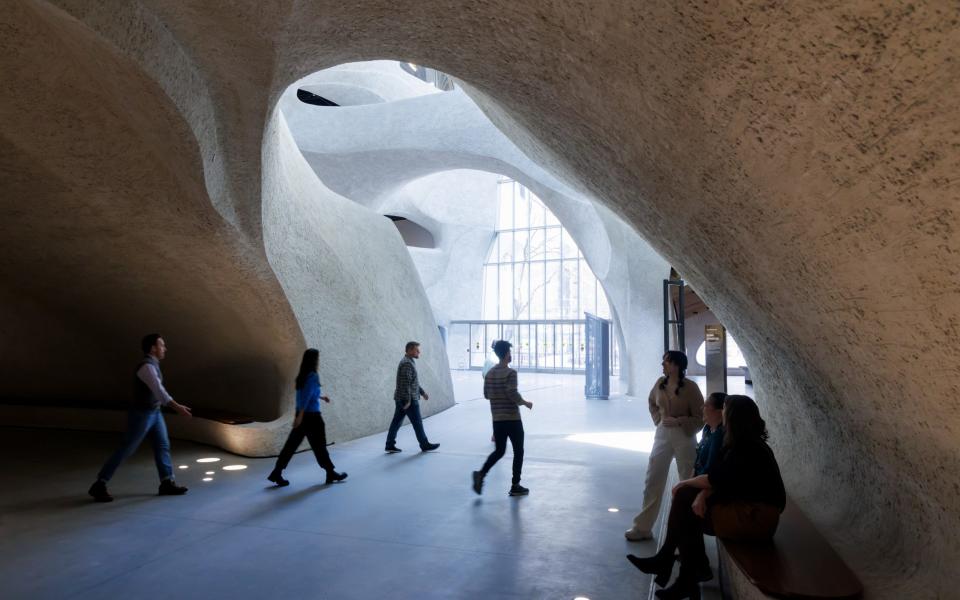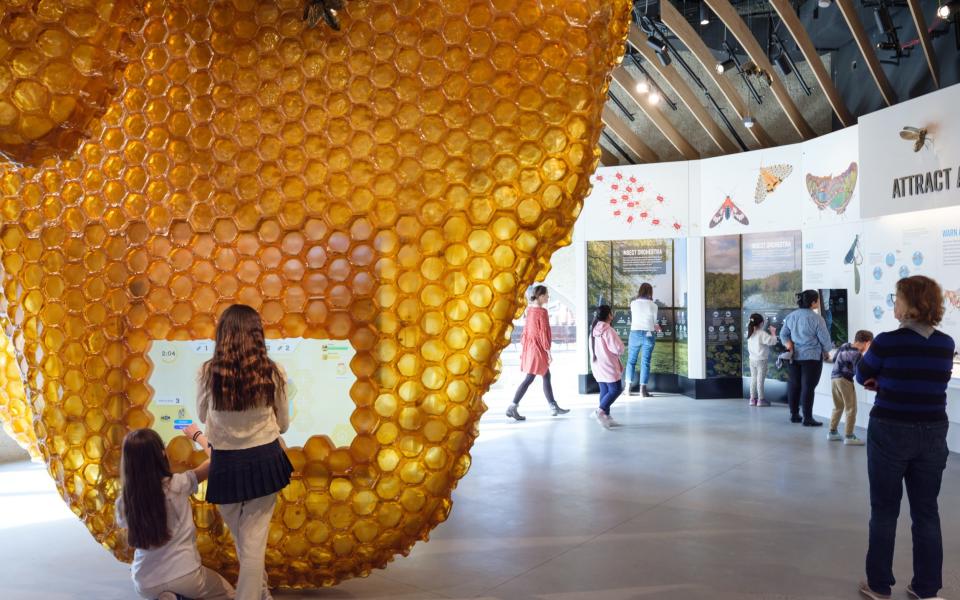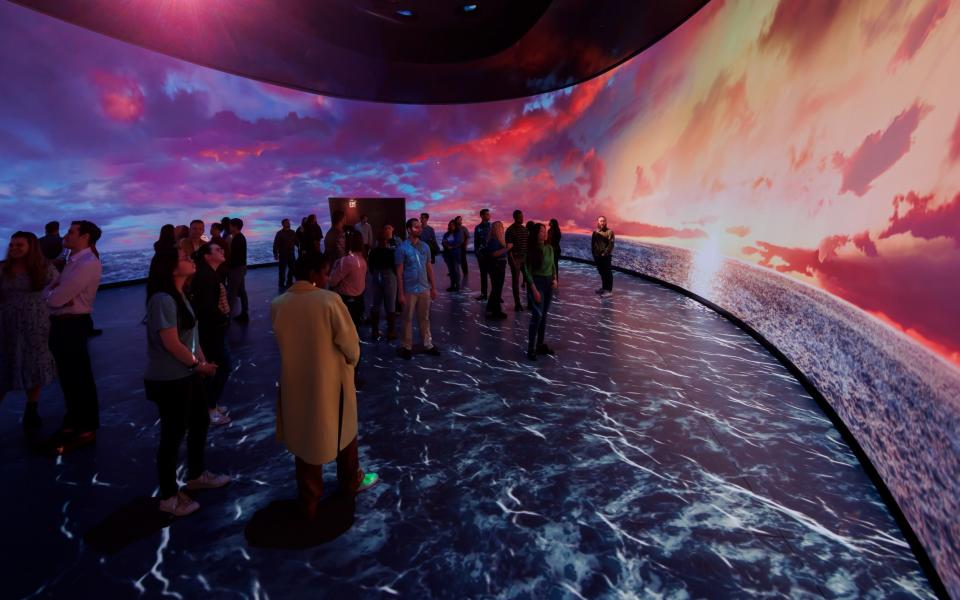Has the American Museum of Natural History’s gamble with a ‘starchitect’ paid off?

From outside, it seems to beckon you in: a billowing façade of pale-granite, with cats-eye windows and a set of doors like a rictus grin. Inside its atrium entrance hall, the Richard Gilder Center for Science is a canyon, or the inside of a skull, or maybe an enormous ant hill.
Welcome to Manhattan’s latest architectural wonder, an extension to the American Museum of Natural History on the Upper West Side, which has just opened. This is arch, theatrical architecture (from unstarry international Jeanne Gang), and it invites us into a vast, imaginative game.
At 230,000-square feet and a cost of $465 million, the Gilder has been nearly a decade in the making. It was also a risk: AMNH is the biggest natural history museum in the world, and among New York’s richest and most respected institutions, not only a museum but also a place of serious research.

Typically, about 5 million visitors come here every year (though numbers have not yet recovered after the pandemic). A self-consciously wacky extension could have undermined its stature. But Gang’s creation does not detract: once the drama of the atrium is out of the way, science takes centre stage.
Everything is designed to demystify the natural world. Great holes in the 83-foot high interior walls look something like stretched pizza dough (made using a technique called shotcrete, which allowed the architectural team to hand-shape the walls’ undulations). Through them are glimpses of exhibits: animal skeletons, rows of skulls, unimaginable things in jars.
These are displayed in tall windows, behind which are laboratories and storage rooms, where scientists scurry about tending the millions of specimens in the centre’s collection.
Then there is the insectarium, with its army of leaf-cutter ants in their purpose built, transparent leaf-cutter-ant city (watching them hoist bits of foliage aloft is mesmerising); a butterfly conservatory, a dizzying immersive walk-through display explaining how all life on earth is connected; classrooms, a library and a theatre.
I wander into the butterfly laboratory (visits by appointment), where scientists tell me compressed storage units hold 1.3 million specimens (“not including moths”).

The Gilder fills a former gap in the museum’s existing hotchpotch of 25 interconnected buildings erected over 150 years, to create a single visitor route (previously, anyone wandering its umpteen galleries hit dead ends and was forced to double back, which led to bunches of people heading in different directions).
The entrance to Gang’s building faces Columbus Avenue, an opposite number to the Central Park West neoclassical entrance, immortalised in the 2006 Ben Stiller film Night at the Museum.
It slots between a chunk of red-brick art-deco on one side and a pink granite neo-gothic fortress on the other, an architectural hangover from an age when museums were concerned with being guardians of things rather than inclusive educators. The Gilder looks nothing like either, though.
Gang, better known for quiet, dream-like towers, often residential, such as the twisted Miro apartments in San Francisco, set out to create a spectacular museum, and she did. As a fantasy canyon, it could easily have slipped into wackiness. But it is dignified, despite the self-consciously Instagrammable appeal.
In future, it will be judged by the children who are about to see it for the first time. They will want to explore Gang’s fantasy building.
But they are more likely to gaze at the leaf-cutter ants, the grisly jars, the dazzling butterflies, the scientists at work, and find it all awesome.
Info: amnh.org

 Yahoo Sports
Yahoo Sports